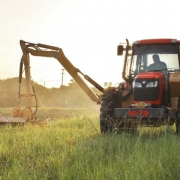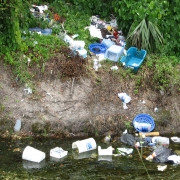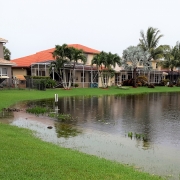LWDD’s Mowing Program
The Lake Worth Drainage District’s (LWDD) personnel perform daily maintenance tasks to ensure the 1,000 miles of canal rights-of-way are functioning as designed. One of these tasks is the quarterly mowing of canal banks and rights-of-way. The quarterly mowing rotation provides for operational access to canals for emergency response and regular maintenance with minimal cost to taxpayers.
Mowing crews are divided into two groups. Each group utilizes special equipment. Flat-mowers maintain the top of the canal bank, while arm-mowers are used to maintain the side slope of the canals. Due to scheduling and equipment utilization, it is not unusual for the side slope of the canal to be mowed several weeks after the top of bank was addressed. LWDD mowing crews take care to avoid damaging private property located within the right-of-way. However, irrigation lines, sprinkler heads, and other items located within the LWDD’s rights-of-way are encroachments. Whether the encroachment is authorized or not, it is placed there at the owner’s risk and damages from LWDD maintenance operations will not be reimbursed.
The quarterly mowing rotation is frequent enough to meet LWDD’s operational needs while not burdening all the taxpayers within its boundary to pay for enhanced maintenance for the few residents living adjacent to the canals. Unlike a landscape company hired to care for the aesthetic look of your lawn, LWDD’s goal is to provide the access it needs for flood control operations. LWDD maintenance activities do not provide fertilization or irrigation of the vegetation, nor will LWDD crews trim around fence lines or guardrails. Some residential communities, with LWDD’s permission, may choose to maintain the right-of-way at their cost in order to provide the community with the higher level of maintenance they desire.
Additionally, some areas may be inaccessible to equipment and crews. Due to personnel safety, these areas may not be maintained regularly or may be maintained with the application of herbicides. You can view canal bank mowing/spraying activities on LWDD’s Mapping Portal (link: http://lwdd.maps.arcgis.com/home/index.html).






